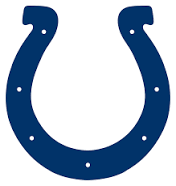Las Vegas Raiders
- Paul Grange

- Sep 23
- 3 min read

The Las Vegas Raiders are one of the NFL’s most iconic teams — not just for their football, but for their identity and their unmistakable crest. Born in 1960 as a charter AFL franchise, the team’s name originally came from a fan contest that briefly suggested “Senors.” That was scrapped quickly, and the owners settled on “Raiders” — short, sharp, and perfectly matched to their black-and-silver look. The pirate shield and crossed swords became symbols of menace and rebellion.
They began in Oakland, a gritty, blue-collar port city across the Bay from San Francisco. Oakland’s economy was built on shipyards, railways, and docks, and its identity was tied to the sweat and strength of working-class communities. The pirate imagery matched perfectly, even if Oakland wasn’t historically a pirate haven. California’s Pacific coast had seen occasional privateers raid Spanish galleons, and during the Gold Rush, San Francisco Bay became a wild frontier of abandoned ships and hustlers. Against that backdrop, the idea of “Raiders” felt right for Oakland: a team of dockworkers and underdogs, rougher – and tougher – than their polished rivals across the bay,
The 49ers’ name tied to the Gold Rush prospectors — dreamers chasing fortune — and the team’s image developed around a more glitzy, West Coast glamour: Joe Montana, Jerry Rice, and later Silicon Valley wealth. The Raiders were the opposite: hard edges, spike-helmeted fans in the “Black Hole,” a symbol of defiance.
Under Al Davis, who became head coach, general manager, and later owner, the team fully embraced its outlaw reputation. His motto, “Just Win, Baby,” summed up the ruthless pursuit of victory. In Oakland, the Raiders won three Super Bowls (1976, 1980, 1983) with legends like Ken Stabler, Howie Long, Marcus Allen, and Lester Hayes.
Davis wasn’t just a football man — he was a maverick. He constantly clashed with NFL leadership. In the late 1970s and early 1980s, Davis fought the league in court for the right to move the Raiders from Oakland to Los Angeles. The NFL tried to block him, but Davis won in the courts, proving that no one told the Raiders what to do. That fight set legal precedents about franchise freedom and made the Raiders the ultimate symbol of independence. Later, when stadium issues mounted, Davis wasn’t afraid to uproot the team again. Every move — from Oakland to LA, back to Oakland, and finally to Las Vegas under his son Mark Davis — was done on the Raiders’ terms.
In Los Angeles, the Raiders became a cultural force, embraced by Latino communities and immortalised in West Coast hip-hop — N.W.A. and Ice Cube wore Raiders gear as a badge of defiance. Few teams fused sport, music, and culture so powerfully.
By 1995 they returned to Oakland, greeted with open arms despite the scars of departure. But again, stadium struggles drove change. In 2020, the Raiders moved to Las Vegas, their latest reinvention. Their new home, Allegiant Stadium - on Al Davis Way - is a gleaming black dome nicknamed “The Death Star,” sitting just off the Strip. With its futuristic design and ability to host Super Bowls, concerts, and global events, it has made the Raiders central to Las Vegas’s transformation into a sports capital.
The Raiders’ fan culture remains unmatched. They’ve always been a team for outsiders: the dockworkers of Oakland, the street kids of LA, now the dreamers and gamblers of Vegas. Their black-and-silver uniforms, pirate logo, and intimidating swagger created one of the most recognisable brands in sports. Even through decades of ups and downs, the identity has never wavered.







Comments